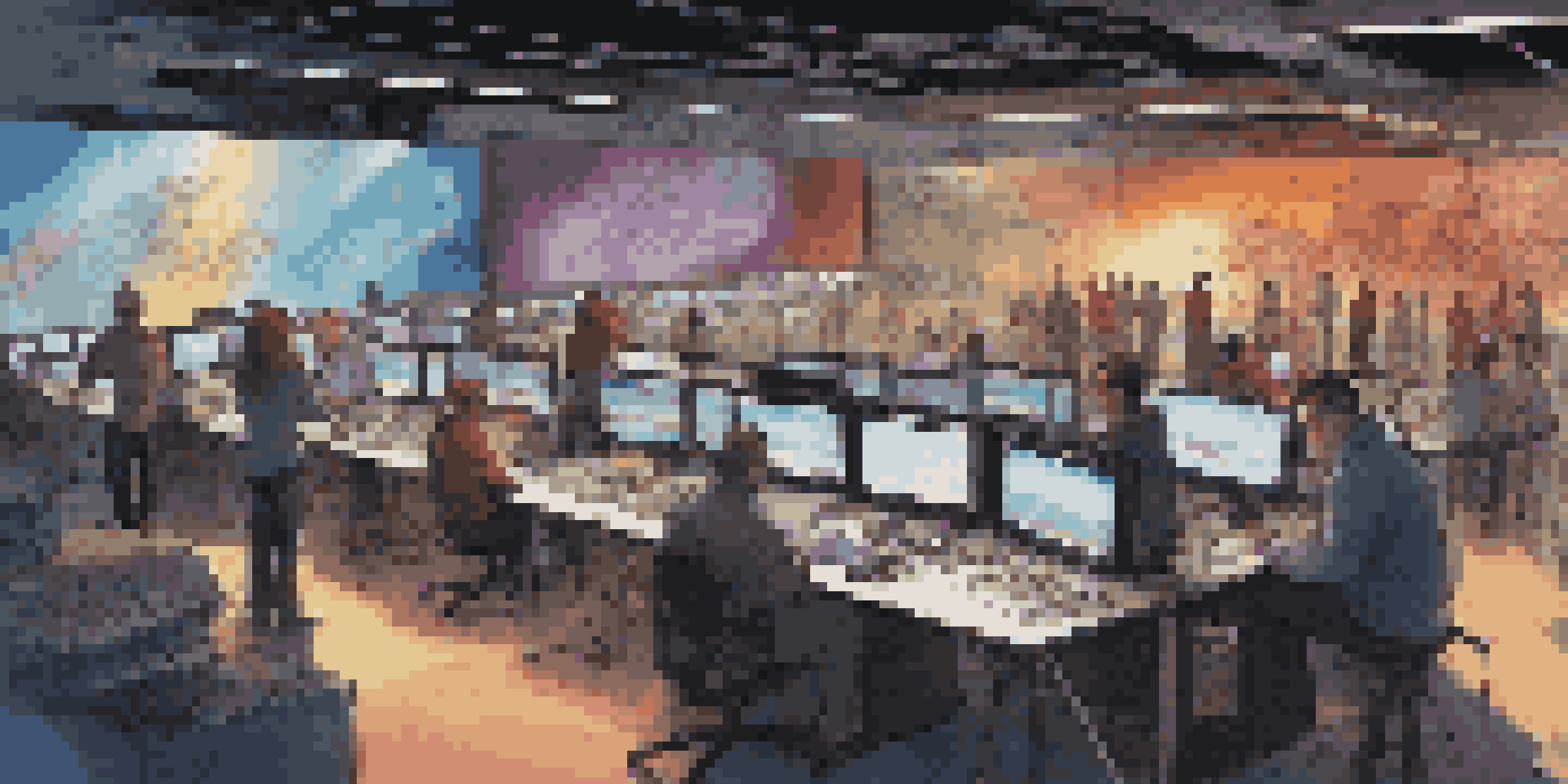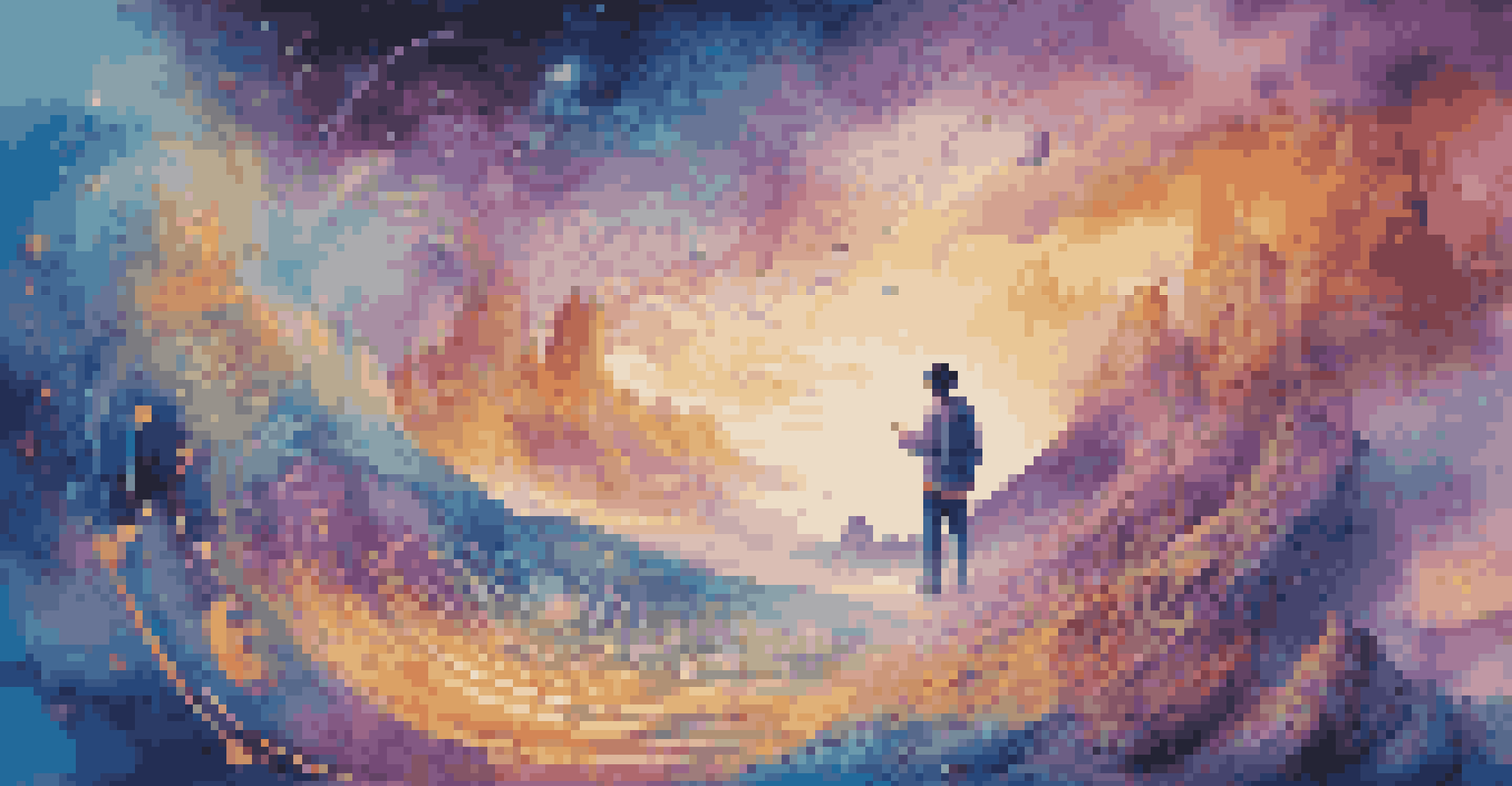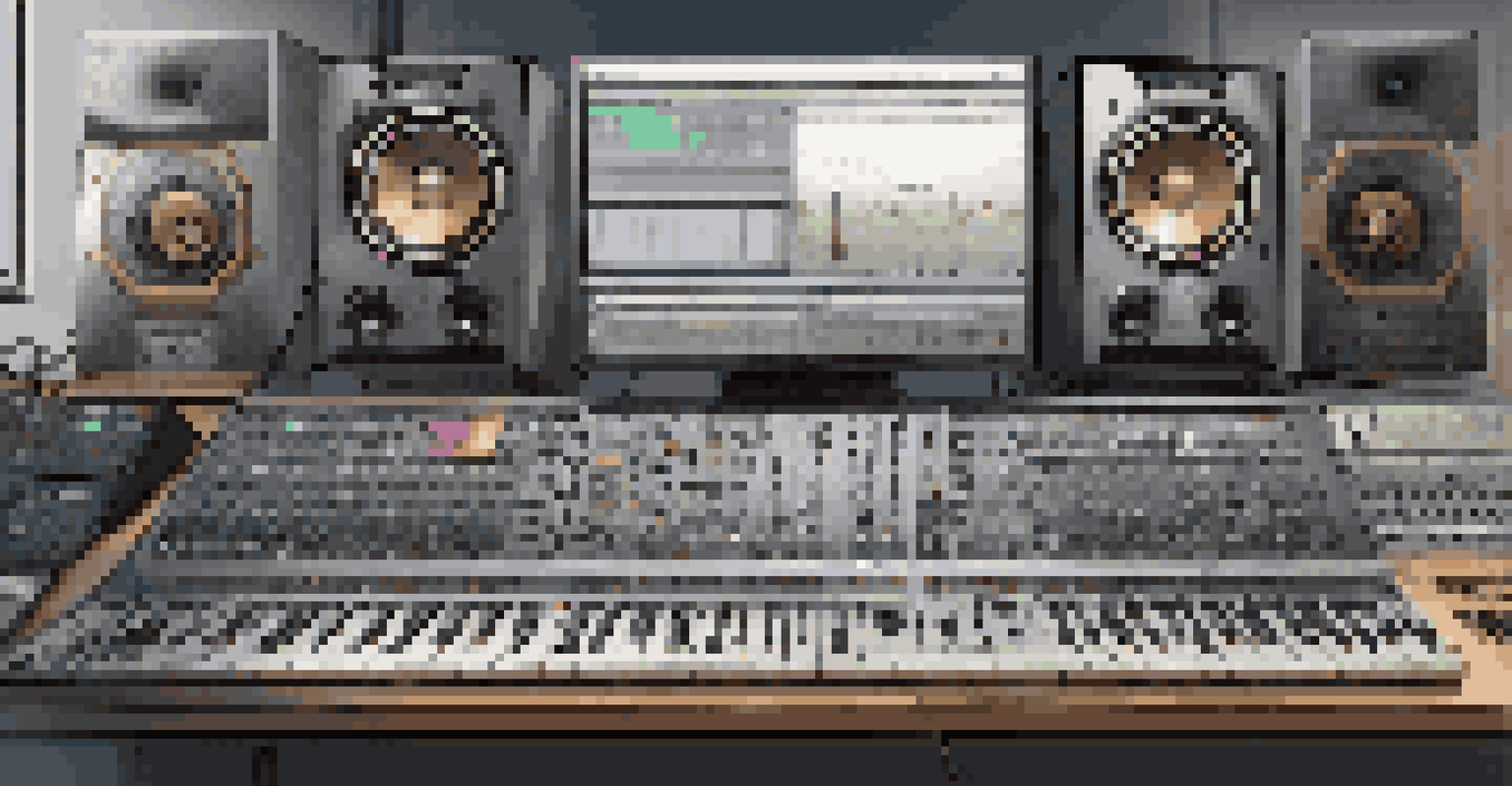Integrating Sound Design with Visual Effects in Film

Understanding the Role of Sound Design in Film
Sound design is a crucial element of filmmaking that enhances the narrative. It involves creating and manipulating audio elements to convey emotions, set the tone, and immerse the audience. Think of sound design as the unseen character in a film, shaping the viewer's experience without being overtly noticeable.
Sound design is the unrecognized hero of the film industry.
From the subtle rustle of leaves to the booming explosion, every sound has a purpose. It not only complements visual elements but also adds depth to the story being told. For instance, a suspenseful scene might use a low rumble to build tension, making the audience hold their breath as they await the next moment.
The integration of sound design with visuals can elevate a film from good to unforgettable. When done right, it creates a harmonious blend that captivates viewers, pulling them deeper into the cinematic experience.
The Power of Visual Effects in Storytelling
Visual effects (VFX) are essential tools that filmmakers use to create stunning visuals that would be impossible to capture on camera. From fantastical creatures to breathtaking landscapes, VFX allows storytellers to bring their imagination to life. Imagine a superhero flying through a city; without VFX, that scene would lack the same impact.

These effects not only enhance the aesthetics but also assist in storytelling. For instance, a character's transformation can be represented through a combination of practical effects and VFX, making the moment more dramatic and memorable. This blend can evoke emotions that resonate with the audience on a deeper level.
Sound Design Enhances Storytelling
Sound design plays a crucial role in shaping the emotional landscape of a film, creating an immersive experience that complements the visuals.
When VFX and sound design work together, the result is a seamless experience that feels both real and fantastical. This collaboration is essential in immersing viewers in the film's world, making them believe in what they see and hear.
Creating a Cohesive Experience: The Synergy of Sound and Visuals
Integrating sound design with visual effects is about creating a cohesive experience for the audience. When both elements are in sync, they amplify each other's impact, leading to a more immersive storytelling experience. For example, the sound of a spaceship taking off should match the visual spectacle of flames and smoke for maximum effect.
Visual effects are not just a tool for creating spectacle; they are an integral part of storytelling.
This synergy can be seen in action-packed films where every explosion has a corresponding sound that enhances the visual thrill. A well-timed sound effect can make a visual moment resonate, creating an emotional response from the audience that lingers long after the credits roll.
Ultimately, the goal is to create an environment where viewers can lose themselves in the film. This requires meticulous attention to detail and a deep understanding of how sound and visuals interact to tell a story.
The Importance of Collaboration Between Sound Designers and VFX Artists
Collaboration between sound designers and visual effects artists is key to a film's success. These professionals must work closely to ensure that their elements complement each other, creating a unified vision. Regular communication and brainstorming sessions can lead to innovative ideas that enhance the final product.
For example, during the production of a fantasy film, sound designers might create unique audio cues that correspond with specific visual effects, like the sound of a magical portal opening. This requires both teams to understand each other's creative processes and to be open to experimentation.
Visual Effects Bring Imagination to Life
Visual effects enable filmmakers to create stunning visuals that enhance the narrative, making fantastical elements feel real and engaging.
When sound and visuals are crafted in tandem, the result is a richer cinematic experience. This collaboration is what transforms a film from a simple collection of scenes into an engaging story that resonates with the audience.
Technological Advances in Sound and Visual Integration
The rapid advancement of technology has revolutionized how sound design and visual effects are integrated in film. With tools like digital audio workstations and sophisticated VFX software, creators can achieve unprecedented levels of detail and realism. This technology allows for greater experimentation and creativity in both sound and visuals.
For instance, virtual reality (VR) and augmented reality (AR) have opened new avenues for immersive storytelling. In these formats, sound design becomes even more crucial, as it helps to create a sense of space and presence that enhances the visual experience. Imagine walking through a virtual world where the sound of footsteps echoes around you.
As technology continues to evolve, so will the possibilities for integrating sound and visuals. Filmmakers who embrace these advancements are likely to produce groundbreaking works that push the boundaries of storytelling.
Case Studies: Successful Integration of Sound and Visual Effects
Several films have successfully demonstrated the powerful integration of sound design and visual effects. For instance, in 'Inception,' the use of sound to complement the mind-bending visuals creates an unforgettable experience. The iconic 'braaam' sound not only enhances the visuals but also becomes a cultural reference point.
Another great example is 'Star Wars,' where sound design plays a pivotal role in building the universe. The sounds of lightsabers and spaceships have become synonymous with the franchise, showcasing the effectiveness of integrating sound with visual storytelling.
Collaboration is Key for Impact
The successful integration of sound and visuals relies on close collaboration between sound designers and VFX artists, resulting in a cohesive cinematic experience.
These case studies highlight that when sound and visual effects are thoughtfully combined, they can create iconic moments in film history. They remind us that sound is not merely an afterthought but an integral part of the cinematic experience.
Future Trends in Sound Design and Visual Effects Integration
As the film industry evolves, so do the trends in sound design and visual effects integration. One emerging trend is the use of spatial audio, which enhances the three-dimensionality of sound, making it feel as if it's coming from specific locations within a scene. This adds another layer of immersion that can captivate audiences.
Additionally, the rise of interactive storytelling, where audiences can influence the narrative, will further challenge sound and visual integration. Filmmakers will need to create dynamic soundscapes that respond to viewer choices, making the experience more personalized and engaging.

Looking ahead, the integration of AI technology in both sound design and VFX will likely streamline the creative process, allowing for quicker iterations and more inventive ideas. The future holds exciting possibilities for filmmakers willing to explore these new frontiers.